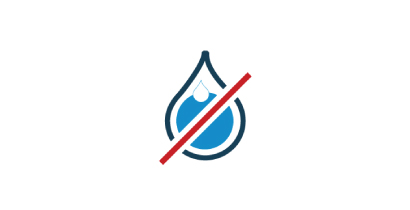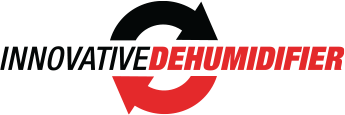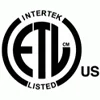The ENERGY STAR® 3.0 program for multifamily properties will expire at the end of 2020. The program will be replaced by ENERGY STAR® Multifamily New Construction Program:
IV. ENERGY STAR® CERTIFICATION
New construction residential buildings must achieve ENERGY STAR® Multifamily New Construction Program certification and comply with all energy efficiency standards as defined in Appendix B (incorporated herein by reference). Adaptive re-use and rehabilitation projects must comply to the extent doing so is economically feasible and as allowed by historic preservation rules. 1
The updated ENERGY STAR® Program requires every ENERGY STAR® Certified home is built with ventilation, to provide outside air indoors and reduce indoor air pollutants.2 Ventilation must be adequate to remove and dilute pollutants that are generated indoors. It is beneficial for pollutants to escape, yet moisture and high humidity from outside can easily enter buildings. According to the World Health Organization’s article Guidelines for Indoor Air Quality: Dampness and Mould “Ventilation also affects air and moisture flow through the building envelope and may therefore lead to moisture problems that degrade the structure.”3
Since ventilation allows for moisture to be continuously added to the air from outside, effective humidity control is more important than ever to maintain and improve indoor air quality, comfort, and property durability.

Ways to Ensure Longer Building Life
- Eliminate Excess Moisture
- Manage indoor humidity levels and condensation
- Design building with materials to minimize mold growth and other moisture issues
Efficiency plays an important role in construction.
In the past, multifamily housing ventilation systems were passive, often relying on tenants to crack windows for pollutants to escape. Since the ENERGY STAR® Certified Homes program was introduced, over 15 years ago, it has continued to evolve and expand as code requirements and efficiency standards increase.4 ENERGY STAR® certified homes are required to provide proper ventilation, away from contaminants “such as garages, exhaust fans, and include screens to keep pests out”.5
North Carolina’s climate is mostly humid subtropical. Summers are hot and humid, while winters are wet and cold.6 The average relative humidity (RH) for North Carolina is 70.6%,7 much higher than the Environmental Protection Agency’s recommended 40-60% RH to prevent mold growth.8 Ventilation allows the high outdoor relative humidity to easily enter homes. The primary factor that will lead to mold growth is moisture, most importantly high indoor relative humidity.
The average relative humidity (RH) for North Carolina is 70.6%,7 much higher than the Environmental Protection Agency’s recommended 40-60% RH to prevent mold growth.8
Dedicated Moisture Removal
The biggest disadvantage of ventilation is the increased occurrence of dampness and excess moisture indoors. The prevention and elimination of moisture and the adverse effects they can cause should be addressed in the early phases of building and should be a continued part of property maintenance. Installing a supplemental dehumidification system will help lower the high relative humidity that is brought indoors through ventilation. The energy efficient IW25 IN Wall/ON Wall dehumidifier provides tankless, quiet, and hands-free dehumidification. Designed to work seamlessly in smaller spaces, the IW25 easily removes humid air that is transferred indoors through vents.
More states are now making it mandatory that homes be built according to ENERGY STAR® requirements, which includes fresh air ventilation. Since ventilation utilizes fresh air intake, giving outdoor air a direct path inside, it is key to take the initiative in removing the humidity and excess moisture. The IW25 in-wall/on-wall dehumidifier will help remove the moisture added via fresh air intake, helping to prevent mold growth and high indoor humidity. Ventilation allows outside air to be brought indoors continuously throughout the day; the IW25 dehumidification system runs independent of HVAC system to help maintain below 60%.
Some states are offering incentives for providing permanently installed dehumidification systems in each unit. Many states are in discussion of adding a dedicated moisture control system into their QAP. The IDS team encourages property owners, developers, architects, and engineers to find out the latest updates and incentives in your state’s QAP.
Example:

The VHDA Qualified Allocation Plan offers 5 points for rehabilitations and new construction, providing permanently installed dehumidification systems in each unit. As the pioneers of multi-family housing dehumidifiers, the IW25 In Wall/On Wall energy efficient dehumidifier resolves moisture issues by creating a consistent Relative Humidity (RH). The IW-25 runs independent of HVAC … Continue reading
SOURCES:
- The 2021 Low-Income Housing Tax Credit Qualified Allocation Plan for the State of North Carolina (pg22) https://www.nchfa.com/sites/default/files/page_attachments/QAP21-FirstDraft.pdf
- https://www.energystar.gov/ia/partners/bldrs_lenders_raters/downloads/HVAC_Factsheet.pdf?42a2-2c5b
- World Health Organization, Ollie Seppänen, Jane Kurnitski 2009, National Center for Biotechnology Information, accessed October 12, 2021 < https://www.ncbi.nlm.nih.gov/books/NBK143947/>
- About the ENERGY STAR Residential New Construction Program https://www.energystar.gov/partner_resources/residential_new/about
- A Complete Heating and Cooling System https://www.energystar.gov/ia/partners/bldrs_lenders_raters/downloads/HVAC_Factsheet.pdf?42a2-2c5b
- Monthly weather forecast and climate, North Carolina, USA https://www.weather-us.com/en/north-carolina-usa-climate
- Oh the Humidity. Which State is the Most Humid? https://www.forbes.com/sites/brianbrettschneider/2018/08/23/oh-the-humidity-why-is-alaska-the-most-humid-state/#7580d5fe330c
- Mold Course Chapter 2: Why and Where Mold Grows https://www.epa.gov/mold/mold-course-chapter-2#:~:text=Indoor%20relative%20humidity%20(RH)%20should,as%20cockroaches)%20and%20dust%20mites.


